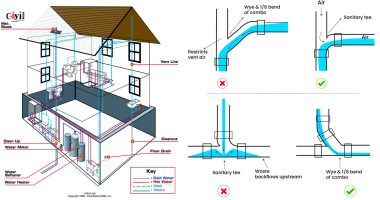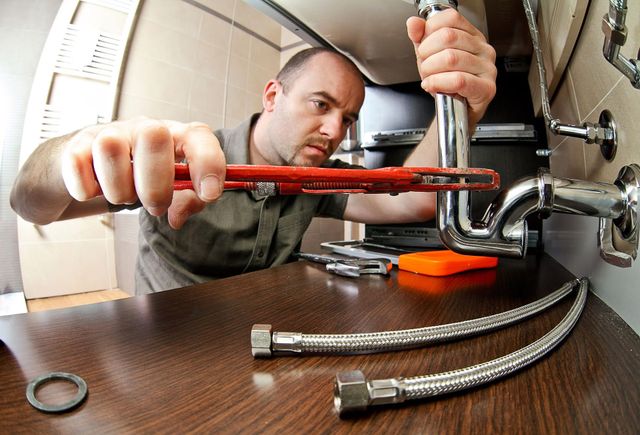The content further down about Plumbing Installation 101: All You Need to Know is amazingly entertaining. Read it for yourself and decide what you think about it.

Recognizing just how your home's pipes system functions is necessary for every single house owner. From providing tidy water for alcohol consumption, cooking, and bathing to safely removing wastewater, a well-maintained plumbing system is crucial for your family members's wellness and convenience. In this thorough overview, we'll check out the elaborate network that comprises your home's plumbing and offer pointers on upkeep, upgrades, and managing common issues.
Introduction
Your home's plumbing system is more than simply a network of pipelines; it's a complicated system that ensures you have access to tidy water and reliable wastewater elimination. Understanding its components and just how they interact can assist you avoid costly repairs and make certain everything runs efficiently.
Fundamental Parts of a Plumbing System
Pipelines and Tubes
At the heart of your plumbing system are the pipelines and tubes that bring water throughout your home. These can be constructed from various products such as copper, PVC, or PEX, each with its advantages in regards to durability and cost-effectiveness.
Components: Sinks, Toilets, Showers, etc.
Components like sinks, toilets, showers, and tubs are where water is used in your house. Understanding exactly how these components link to the pipes system helps in detecting problems and preparing upgrades.
Valves and Shut-off Points
Shutoffs control the circulation of water in your plumbing system. Shut-off valves are critical during emergencies or when you require to make repair work, permitting you to isolate parts of the system without interrupting water circulation to the entire home.
Water System
Main Water Line
The major water line attaches your home to the municipal water system or an exclusive well. It's where water enters your home and is distributed to various fixtures.
Water Meter and Stress Regulatory Authority
The water meter procedures your water usage, while a pressure regulator ensures that water flows at a safe stress throughout your home's pipes system, protecting against damage to pipes and fixtures.
Cold Water vs. Warm water Lines
Comprehending the difference in between cold water lines, which provide water straight from the major, and warm water lines, which carry heated water from the water heater, aids in repairing and planning for upgrades.
Drain System
Drain Pipes Piping and Traps
Drain pipelines lug wastewater far from sinks, showers, and toilets to the sewer or sewage-disposal tank. Catches protect against sewage system gases from entering your home and additionally trap debris that could trigger blockages.
Air flow Pipes
Air flow pipelines permit air right into the drain system, protecting against suction that can reduce drainage and cause traps to empty. Appropriate ventilation is essential for maintaining the stability of your plumbing system.
Value of Appropriate Drain
Ensuring proper drainage avoids backups and water damage. Routinely cleaning drains and keeping catches can protect against pricey repair services and extend the life of your plumbing system.
Water Heating System
Types of Water Heaters
Water heaters can be tankless or traditional tank-style. Tankless heaters warmth water as needed, while containers save warmed water for instant use.
Upgrading Your Plumbing System
Reasons for Updating
Updating to water-efficient components or replacing old pipelines can boost water top quality, minimize water expenses, and enhance the value of your home.
Modern Plumbing Technologies and Their Advantages
Explore innovations like smart leak detectors, water-saving commodes, and energy-efficient hot water heater that can save money and reduce ecological influence.
Expense Considerations and ROI
Calculate the ahead of time prices versus long-lasting cost savings when considering pipes upgrades. Lots of upgrades spend for themselves through reduced energy expenses and fewer repairs.
Just How Water Heaters Link to the Plumbing System
Recognizing just how water heaters connect to both the cold water supply and warm water distribution lines helps in detecting problems like insufficient warm water or leakages.
Maintenance Tips for Water Heaters
Consistently flushing your water heater to get rid of sediment, examining the temperature setups, and examining for leakages can extend its lifespan and boost power effectiveness.
Common Plumbing Concerns
Leakages and Their Causes
Leaks can happen due to maturing pipes, loosened fittings, or high water stress. Dealing with leakages without delay stops water damage and mold development.
Blockages and Blockages
Obstructions in drains pipes and toilets are often brought on by flushing non-flushable items or a build-up of grease and hair. Using drainpipe screens and bearing in mind what drops your drains can stop clogs.
Indications of Pipes Issues to Expect
Low water stress, slow drains, foul odors, or uncommonly high water bills are indications of potential pipes issues that need to be attended to promptly.
Pipes Maintenance Tips
Regular Evaluations and Checks
Set up annual plumbing examinations to capture concerns early. Search for indications of leakages, deterioration, or mineral build-up in taps and showerheads.
DIY Maintenance Tasks
Easy tasks like cleansing tap aerators, looking for commode leakages making use of dye tablets, or insulating exposed pipes in chilly climates can stop significant pipes concerns.
When to Call a Specialist Plumbing Professional
Know when a pipes concern calls for professional proficiency. Trying intricate fixings without proper expertise can lead to even more damages and greater repair service expenses.
Tips for Decreasing Water Usage
Easy practices like repairing leaks promptly, taking shorter showers, and running complete lots of washing and meals can preserve water and lower your utility costs.
Eco-Friendly Pipes Options
Consider lasting pipes materials like bamboo for floor covering, which is durable and environmentally friendly, or recycled glass for kitchen counters.
Emergency situation Preparedness
Actions to Take Throughout a Plumbing Emergency situation
Know where your shut-off shutoffs are located and just how to shut off the water supply in case of a ruptured pipe or significant leak.
Importance of Having Emergency Situation Get In Touches With Handy
Maintain contact info for local plumbing professionals or emergency situation services easily offered for quick feedback during a pipes dilemma.
Environmental Effect and Conservation
Water-Saving Components and Appliances
Mounting low-flow faucets, showerheads, and commodes can substantially reduce water use without sacrificing efficiency.
DIY Emergency Situation Fixes (When Applicable).
Short-term solutions like utilizing air duct tape to patch a dripping pipeline or putting a bucket under a dripping tap can lessen damage until a professional plumbing professional gets here.
Final thought.
Understanding the anatomy of your home's pipes system equips you to maintain it effectively, conserving time and money on fixings. By complying with regular upkeep routines and staying educated regarding modern pipes innovations, you can ensure your pipes system runs efficiently for several years to find.
HOW YOUR PLUMBING SYSTEM WORKS
Which Pipes Do What?
Blue lines = fresh water supply entering the building Red lines = hot water supply entering the building Grey lines = pipes carrying waste away from the building and venting pipes carrying gases away from the building (through the roof) YOUR MAIN PLUMBING SYSTEMS
There are two main plumbing systems that support your home s basic plumbing needs one that brings clean water into your home, and one that sends dirty water away from your home. Connected to the toilet, bath, shower, and other faucets in your home, these two systems keep your water flowing in the right directions.
ACCESSING FRESH WATER
Fresh and clean water is brought into your home through the main water supply line . Filtered through one pipe, this water is pressured to flow into the various fixtures in your home at any given time.
This water can be sourced from a well located on your property, a pond or river (mostly cottages), or, as in most cases, from the city s municipal water treatment centre. However, it is important to note that water that is untreated, such as the water siphoned from ponds or rivers, may not be safe to drink. Personal water supplies always need to be treated for hardness and contaminants before consumed.
MUNICIPAL WATER SUPPLIES
Improve taste and odour Remove sediment Eliminate hardness Reduce chlorine COLD WATER SUPPLY VS. HOT WATER SUPPLY
Cold water flows into your home or building through the service line, which then distributes hot or cold water to your fixtures. This line is most commonly run through a central column that runs floor to floor. Hot water runs in short and straight pipes as the longer the pipeline, the more heat that will be lost in the transfer. Having shorter pipes also allows residents to access hot water more quickly.
WASTE WATER SYSTEM
Your wastewater system is divided into two parts pipes that send wastewater away from your home and venting pipes that send sewer gas away from your home. Sewage water travels through pipes that flush the water and waste towards local sewers that are operated and managed by your city or town. Most sewer systems rely on gravity to move the wastewater to where it needs to go.
The further away from your toilet or sink, the larger wastewater pipes become. This allows for waste to be disposed of from various parts of your home or business at once without pipe blockages. The angle and flow of these pipes are also essential for keeping your waste pipes clear of build up.
https://harrisplumbing.ca/how-your-home-plumbing-system-works/

Hopefully you enjoyed our section about . Thanks a ton for taking time to read through our piece. If you enjoyed our article if you please be sure to share it. Thank you so much for your time invested reading it.
Call Today